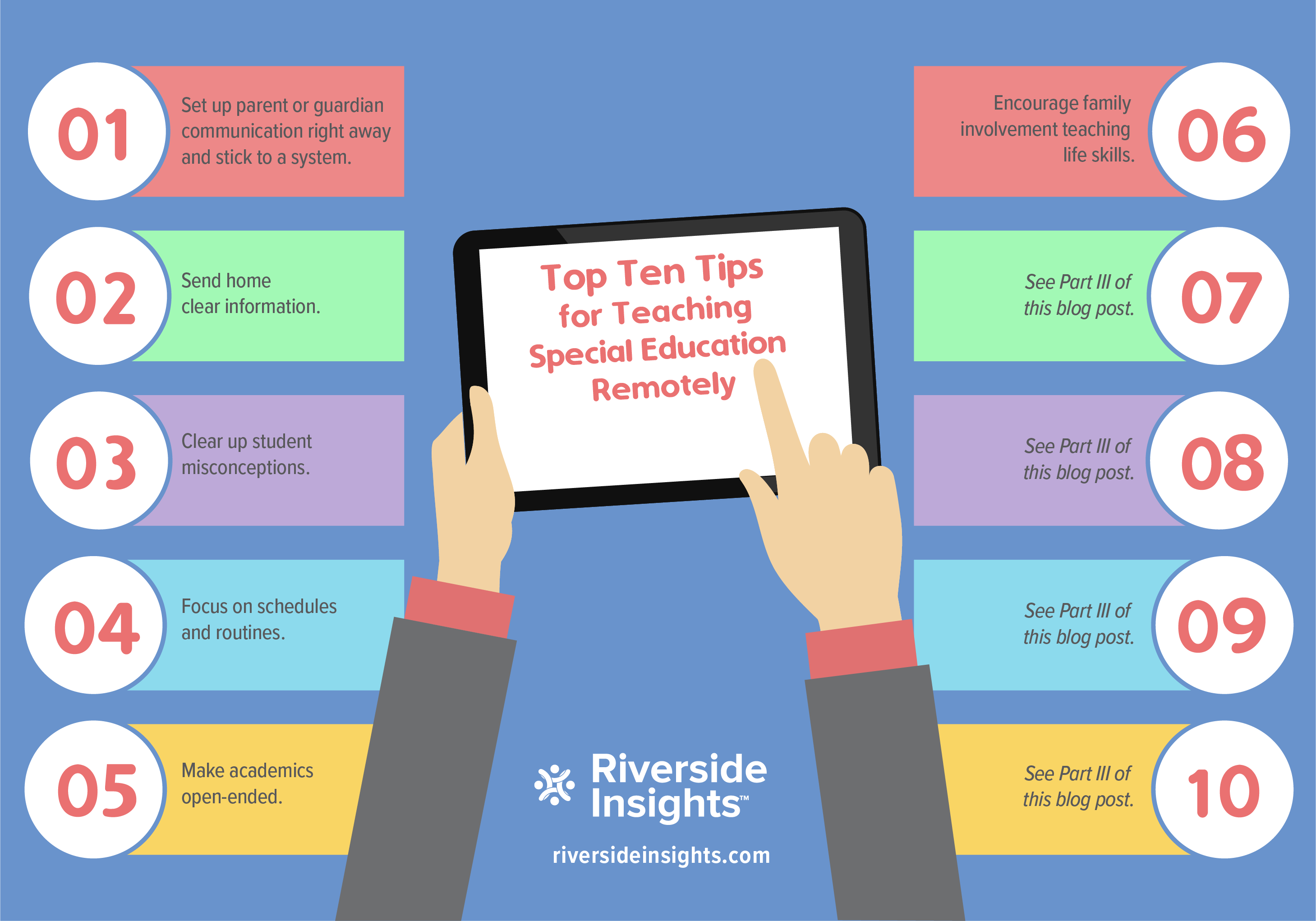
Previously I shared three of ten tips for teaching special education remotely, including setting up family communication, sending home clear information, and teaching students about COVID-19. Below are the next three tips in the series “10 Tips for Teaching Special Education Remotely.”
4) Focus on schedules and routines.Schedules work for ALL, even adults, by creating a sense of normalcy. You can send home physical schedules (if you use Velcro folders, strips, boards, etc.), work with families to create home schedules and email them a visual version, or teach parents or guardians how to make simple written schedules. Involve the student as much as possible when creating a schedule. For example, you can ask questions such as what time of day do they like to take a walk, or what their preferred activities are for the afternoon. This way you can intersperse self-care and rewards with academic times. You can also teach families how to use first/then language and visuals, use iPad apps, and set up choices for all levels of students. In addition, you can teach families to use timers, positive reinforcement, rewards, and behavior charts. Setting up these things will help keep negative behaviors in check in the long run due to a calmer environment. Some resources for you to explore include:
- A post with many premade schedules and home routines
- Boardmaker has free resources right now, including premade items and a 90-day free trial
- SymbolStix has free communication boards during COVID-19
- An article about setting up schedules for students with ADHD at home
“Make activities fun and comprehensive, with choices of different ways to show competency.”
5) Make academics open-ended.
Utilize projects, choice boards or work menus, journal writing, picture writing prompts, independent novel studies, etc. There are tons of virtual field trips online that students could do and then write about. You can assign math games and independent reading online. Students may not be in the same headspace they were in before the pandemic, where they could sit at a desk and complete book work. Make activities fun and comprehensive, with choices of different ways to show competency. Students can send you photos of finished projects, share them on Zoom, or even have a chat with you on the phone to demonstrate understanding. This way all learners can be successful, even without the internet.
- Here is a way to encourage reading at home, that could be used in tandem with a website such as Epic!.
- Choice boards work for older students as well. For example, you could make a board using these short stories for high school students.
- Students could have their choice of these New York Times photo writing prompts, and then read the actual story that goes with the photo and compare.
- Here is a link to 101 virtual field trips. This would be perfect for a choice board and a wide variety of learners.
- A free journal activity for COVID-19
- I often would let my students choose what math problems they wanted to complete, as long as they did a certain amount from the assignment.
- I also often used math projects. A student favorite was designing a house using area and perimeter in each room. Students could then meet on Zoom and show off their designs.
What can students learn at home from their family? This is a good opportunity for students to work on tasks such as doing laundry, washing dishes, sorting silverware, etc. at home. For students who need higher level tasks (although there are a lot of college kids who can’t do laundry…), they could work on cooking skills, paying bills, balancing a bank account, researching the cost of renting an apartment, or coming up with a college financial plan. The options really are endless.
- Here is an excellent example of how a teacher assigned life skills tasks to her class using a choice menu.
- Life skills ideas for middle school kids and teens
- This article has examples of things teens should know before leaving for college.
Do you have helpful resources to share regarding creating schedules, utilizing open-ended assignments, and teaching life skills? Please share!
Stay tuned for the last part of this series on remote learning with tips 7-10.





